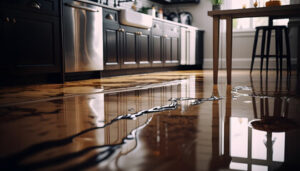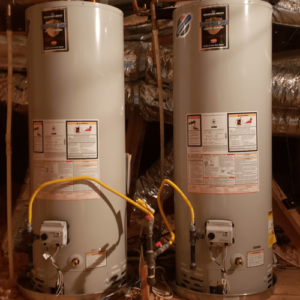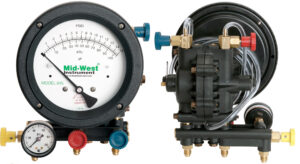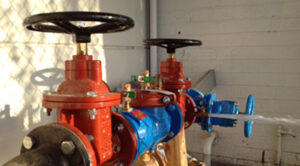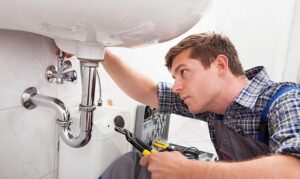Plumbing Shreveport LA is a network of pipes, valves, fittings and fixtures that transport water and waste in homes and buildings. Plumbers are skilled professionals who install, maintain and repair these systems.
Modern plumbing has made it possible to enjoy clean, fresh water at the turn of a faucet and to flush away waste without leaving our homes. These advances have significantly boosted hygiene and eliminated contamination and disease.

Before water reaches the end user, it has to pass through a number of different pipes. Valves are used throughout this process to control the flow of water and prevent backflow. They also act as a safety feature in case of an emergency by shutting off water to the entire system. Valves are found in both household and industrial plumbing and come in a variety of shapes, sizes, and designs. Each type of valve serves a unique purpose.
The most common types of valves are gate, ball, and plug valves. All of these can be manually operated or equipped with an actuator to automatically change and control the opening settings. They are designed to operate under specific pressure and temperature ratings. Some are even designed to resist corrosion and wear.
Gate valves have a small gate at the center of the valve that is moved up and down by use of a threaded control on the top. Each turn of the control moves the gate up or down and allows or restricts fluid flow. This type of valve is very durable and operates well in most applications, including liquid and gas piping systems.
Plug valves have a cylindrical or conically tapered plug that either allows or restricts fluid flow. They perform well in slurry applications as the wiping action of the plug prevents the accumulation of suspended particles that could create obstructions in the flow. These valves require a quarter-turn rotary motion to open or close and operate effectively in high-pressure applications.
A ball valve has a perforated ball that pivots inside of a tubular body and controls the passage of air, liquid, or other materials through the pipe. By turning the valve control, the ball can be positioned to align the hole in the middle of the valve with the pipe or turn it so that it’s perpendicular to the pipe and thus stops the flow of water. These valves are very quick to operate, which makes them a good choice for situations where speed is more important than precision.
When choosing a valve, it’s important to take into account the type of pipe it will be connecting to as this will influence its functionality. For instance, it’s best to choose a valve with screwed ends that match the type of piping it will be connected to. This will prevent leakage from the point where the valve connects to the piping system, as well as reduce maintenance and repair costs over time.
Fixtures
Fixtures include faucets, sinks, bathtubs, showerheads, toilets, and other devices that connect to a plumbing system. They are available in a variety of shapes, styles, and materials, and come in many different finishes and colours to meet varying tastes and functional requirements. Fixtures are usually located within the reach of people, making them easier to repair, tinker with, or replace than piping or a plumbing network. They are also often designed to be stylish and attractive, making them an important design element in a bathroom or kitchen.
Most plumbing fixtures have one or more water outlets and a drain, which is connected to a waste line that runs underground, under the floor, or through a wall. The drain often has a device that can be manipulated to stop the flow of water from the fixture. Some fixtures also have a flood rim level, which is the point at which water will begin to overflow if the drain is plugged. Most fixtures are designed to be easy to clean and disinfect, and they may be made of plastic or ceramics that resist stains and odours.
Besides toilets, sinks, tubs and showers, other common fixtures include drinking fountains, laundry traps, garbage disposals, and bidets. In areas with warm weather, homes might have outdoor showers for washing off sand and other debris before entering the house.
Plumbing fixtures are a significant investment that contribute to the overall value and function of a home or building. They should be inspected and maintained regularly to ensure they are functioning properly, and they should be selected carefully to complement the design and style of the space.
The number of plumbing fixtures in a property is an important consideration when it comes to pipe sizing calculations. Plumbing codes and standards provide tables and formulas that correlate the number of fixture units with the appropriate pipe size to ensure adequate water supply, low pressure drop, and efficient system operation. Having experienced professionals evaluate and calculate fixture values will ensure accurate identification, estimation, and documentation of these tangible assets. This will allow for better management of their physical and financial performance over time.
Installation
The plumbing industry encompasses a wide range of skills and expertise, from design to installation and repair. It is important to note that plumbing work is not something that can be easily DIY-ed due to the technical nature of the job and its implications for health and safety. Licensed plumbers have the training, experience, and equipment to ensure that all work is done correctly and according to local regulations.
The responsibilities of a plumber include designing and installing the pipes that transport water throughout a building, as well as connecting them to fixtures like toilets, showers, sinks, faucets, and appliances. The process begins with a detailed plan, which should comply with local plumbing codes and regulations. This allows for accurate pipe routing and the installation of fixtures that meet quality and safety standards. It is also the responsibility of the plumber to ensure that all plumbing systems are properly insulated and sealed, to prevent the risk of leaks and other problems.
In new construction, plumbing installations are often a major part of the overall building project. The installers make sure that all necessary pipes are in place before pouring the concrete foundation. During this phase, the plumbers set the sewer accommodation stubs for future connections to the municipal sewer line and any private septic tanks. They also lay out and connect the supply lines for cold and hot water, as well as drains. During this stage, the plumbers also test the plumbing system to ensure that all connections are secure and there are no leaks.
Plumbing installation can be complex and difficult, particularly when working in tight spaces or confined areas. The finished product must be safe and aesthetically pleasing, so there is usually some level of customization required for each customer’s needs. In addition, the plumbing system must be able to handle the expected volume of usage, as well as any specific requirements like water pressure, temperature, or abrasion resistance.
Commercial plumbing systems are generally more complex than residential ones, as they need to accommodate larger amounts of water and waste and handle greater volumes of usage. They also need to support specialized appliances, comply with more stringent health and safety regulations, and facilitate easy access for maintenance and repairs. This requires a higher level of expertise than the typical residential plumber, and it is recommended that businesses work with licensed commercial plumbers.
Maintenance
Plumbing is an integral part of any home or building, providing clean water for everyday use and removing waste. It’s easy to take this system for granted until something goes wrong, and then it becomes a major headache that can cause costly damage, disrupt your routine, and put your health at risk. That’s why regular plumbing maintenance is so important.
Plumbers perform a wide range of tasks in the course of their work, including inspecting pipes for leaks and other damage, cleaning drains, installing fixtures, and more. Many of these tasks require specialized tools and training to ensure they are completed properly. When these services are performed regularly, it helps to catch issues before they become serious problems that require expensive repairs or replacements.
Regular maintenance also helps to reduce energy costs and water wastage. Leaky faucets, running toilets, and inefficient water heaters can all lead to excessive water usage that results in higher utility bills. By identifying and addressing these issues early on, you can save money on your monthly bills while also protecting the environment.
In addition to reducing energy and water costs, plumbing maintenance can help to improve the quality of your home’s water. Over time, mineral deposits, sediment buildup, and other contaminants can accumulate in your pipes and fixtures, causing poor water quality. Regular plumbing maintenance can ensure these contaminants are removed and that your water is clean and healthy.
